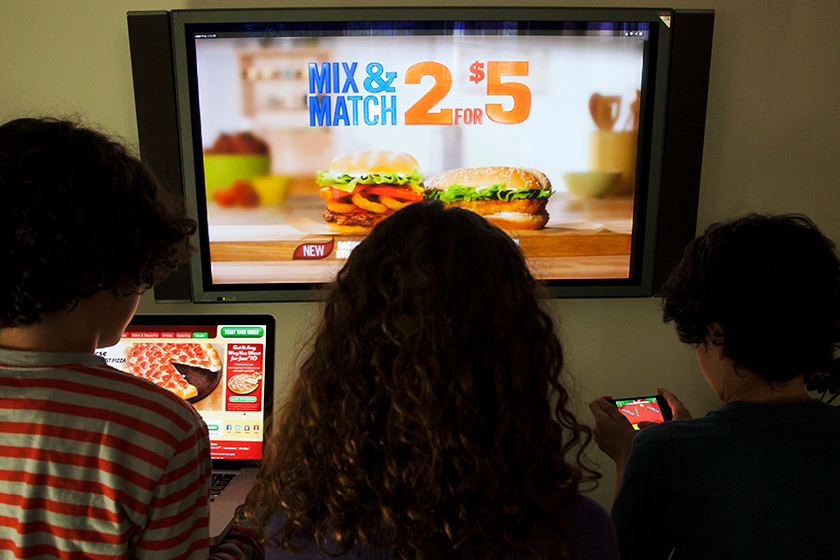Although time spent watching TV did not increase, children and adolescents viewed more television food and beverage advertisements in 2012 than in 2008. This boost was due primarily to a jump in the number of ads aired per hour of TV viewing, and affected black kids more than white, according to a new study from the Rudd Center for Food Policy and Obesity at the University of Connecticut.
Food companies have figured out a way to increase TV advertising to young people even though they aren’t watching more TV. — Frances Fleming-Milici
“It was troubling to find that, despite little change in TV viewing time by young people of all ages over the four years, their exposure to food and beverage ads increased, and the increase for black young people was even greater,” says Frances Fleming-Milici, research associate for the UConn Rudd Center for Food Policy and Obesity, and lead author of the study.
“Our findings indicate that food companies have figured out a way to increase TV advertising to young people even though they aren’t watching more TV,” she says.
The new study, published today in Pediatric Obesity, is the first comprehensive examination of TV-viewing patterns and related exposure to food and beverage ads by age group.
The researchers used Nielsen data to compare the amount of TV viewing and the number of food advertisements viewed by network type (including black-targeted, and child- and youth-targeted), age group (children, ages 2-5 and 6-11, and adolescents, ages 12-17), and race, and assessed changes from 2008 to 2012.
The study found that adolescents watched about the same amount of TV as children (ages 2 to 11), but they were exposed to more food ads than children. In addition, black youth of all ages viewed significantly more ads than white youth of all ages. Key findings include:
- From 2008 to 2012, total food ads viewed increased for black and white children and adolescents, driven by an increase in the number of food ads appearing per hour of TV viewing. The greatest increase was found among adolescents. Black adolescents saw 30 percent more ads in 2012 than in 2008, while ads viewed by white adolescents increased by 18 percent.
- The highest rates of unhealthy food advertising appeared during programming targeted to youth under 18 (such as Fuse and Nick-at-Nite) and black-targeted programming (such as VH1 and BET), while children’s programming (including Disney XD and non-commercial programming) averaged the lowest rates.
- Black-targeted networks contributed a significantly higher proportion of ads for candy, fast food and other restaurants, baked goods, and carbonated beverages viewed by black youth.
“These results demonstrate limitations in food industry actions to reduce the impact of unhealthy food marketing to children. Despite lower overall rates of food advertising on children’s programming compared with other types of programming, children under 12 saw more food advertisements in 2012 than in 2008,” says Jennifer Harris, director of marketing initiatives for the UConn Rudd Center and associate professor in allied health sciences, and an author of the study.
“Food companies must address unhealthy food advertising during all types of programming targeted to children and adolescents, including networks viewed primarily by black audiences,” adds Harris. “These improvements would benefit all children, and help address health disparities affecting black youth.”
The study was funded by a grant from the Robert Wood Johnson Foundation.



